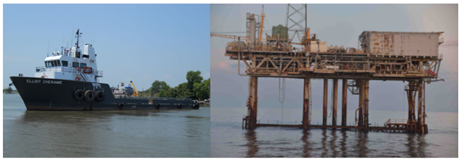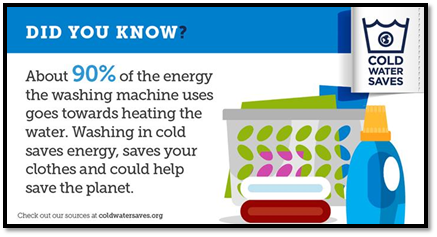Navigating to Zero - February 2023
New Year – New Challenges & New Opportunities
What are your professional goals for the new year? Are you considering ways to better communicate a strong safety culture? Are you looking for resources to develop your safety program? Whatever your safety and sustainability goals are, AWO wants to support you in building the competencies, best practices, and capacity to operate at the highest standards of safety, sustainability, efficiency, and innovation.
AWO’s goals for the new year are guided by our Strategic Plan, a living document informed through deep listening and active partnership with you, our members. The plan is not a reference, it is a compass that guides AWO’s work in our industry’s voyage to care for our employees and our communities by continuously improving the safety of our operations, the professionalism of our people, and the protection of our environment.
Within the plan, we define the milestones and deliverables that will be proof of our progress. To achieve the 2024 milestones of advancing the industry’s safety culture and expanding safety data and analysis, the Safety and Sustainability Department’s 2023 deliverables include the development of tools, resources, and forums for information-sharing to support continuous improvement in safety and sustainability, and the identification of data and statistics needed to support safety goals.
To meet these goals, we rely on our member working groups and strategic partnerships. These forums and connections allow us to effect real, positive change for our mariners that would not be possible without cooperation.
When you ask yourself what your professional goals are, we hope they include staying involved in AWO’s working groups, and we encourage you to introduce new members from your team and the industry to the many opportunities an AWO membership includes. Our goals are your goals, and we look forward to continuing to work with you in 2023.
AWO Safety Committees’ Winter Meeting Returns In-Person in Houston
|
February 28th
morning
|
Tankering and Barge Operations Subcommittee Meeting subcommittee members only
|
Safety Leadership Advisory Panel Meeting subcommittee members only
|
|
February 28th
afternoon
|
Distracted Operations Subcommittee training document presentation
|
Tankermen Safety Presentation discussing a day in the life of a tankerman
|
|
Mariner Wellness Discussion with SCI opportunities and initiatives for 2023
|
Future of Training Panel Presentation featuring leading industry partners
|
|
|
March 1st
morning
|
Electronic Charting Discussion Rosepoint and regulatory partners discuss ECS and the sunsetting of paper charts
|
Navigation Safety discussion of Incidents involving moveable bridges with industry & regulatory partners
|
|
Navigation Training with Technology opportunity to test a cloud-based simulator
|
Lessons Learned from Marine Accidents featuring the NTSB
|
|
|
And much, much more!
|
||

Hannah began her career with Golding Barge Line in December 2016 as receptionist. Over the past five years, she has learned and grown by accepting opportunities to work in positions such as HR Administrator, Safety Administrator, and now, Health and Safety Director. “Being a part of Golding Barge Line has been a dream and an answered prayer. I am thankful to have a wonderful husband, be a mama to a precious little girl, and have a soul eager to travel the world!”
What are your safety program priorities for 2023?
From a thousand-foot view, our safety priorities at Golding Barge Line are to encourage and strive for zero incidents and injuries by engaging the crews to take ownership of their safety. I believe this goal is attainable as we are openly communicating the hazards prior to starting each watch or job task and looking out for one another. When we apply the right training techniques, fuel the driven and passionate mariner with positive feedback and recognition, and put in the effort to achieve a safe workplace, we will see our safety culture evolve with outstanding results.
Golding Barge Line continues to focus on being proactive in our incident response. Having a reactive incident response is an element of this industry that we are trained on, drilled on, and unfortunately remembered by. If we are reacting, that means the incident has already occurred; what we want at GBL is to prevent that incident from having the chance to occur. A proactive response is challenging – it takes creativity, patience, teamwork, and sometimes a “sales pitch.” However, once proactive actions are proven successful, our mariners take notice, allowing the culture to evolve to a higher standard. It is the most rewarding aspect for our mariners, at least from my point of view. In the last few years our team has focused on near miss submissions. We have learned what they are, how they work, how to show their impact and how to continually use them to our advantage. I am thoroughly impressed with and thankful for our team’s participation in the near miss program – and that is the catalyst that fuels our next step: Safety Observations. This year we are going to take a deep dive into this proactive aspect of safety. Safety Observations are passive situations that have the potential to become a hazard. These situations will be identified by crew members who view their work tasks through “safety vision.” Like near misses, it will take practice, learning moments, and conversations, but it will also reap great benefits. I am excited to see what we will accomplish this year!
What new training or safety tools do you look forward to using or learning more about?
When your mariners are scattered throughout the inland waterways, identifying resources and locations to train our mariners is an accomplishment all on its own. We are very fortunate as an industry to have many options to help train our mariners at every phase of their career. I am looking forward to continuing our partnership with the Seamen’s Church Institute, our local community college, and researching other options for the future. Additionally, we are partnering with a company that provides a database for reports, submissions, live statistical data, current trends, and resource information at the click of a button. Giving the crews a data-driven visual to look at our performance is key to keeping them informed. I believe we can all relate to letting go of manual data entry and embracing the technology we now have available. We are convinced that easy access to real-time statistics from our safety observations, near misses, and lessons learned will have a positive and measurable effect on the safety of our mariners.
What is something you’d like to share about our industry, or advice you’d give to someone considering maritime transportation as a career?
The maritime industry is a hidden gem in this world. We know it is massive, our mariners and their families know it is massive, and yet there are still so many opportunities to educate and invite individuals into this industry. If you have the opportunity to join the maritime industry, my advice would be to take it! There is no stagnation, there are new opportunities and experiences every day. The networking that takes place during industry meetings and gatherings creates not only career lifelines but also friendships. For me, I found a career and family in this industry. It is encouraging to have ownership that supports and challenges us and holds us to high expectations. It is a fulfillment to work with coworkers that are also friends. It is also pure joy to gather with our families, personally raise my own family, and do life together. I truly love my Golding Barge Line family; I can’t imagine a more satisfying career!
Recent NTSB Incident Investigations

- Review your fatigue management or crew endurance policy to be sure it meets the standards of regulation and best practice.
- Ensure your mariners feel confident reporting fatigue to their supervisor, communicate the responsibility every mariner has to be on the lookout for signs of fatigue in their co-workers, and ensure a culture of reporting fatigue and other factors affecting fitness for duty is supported by every level of management.
- Refer to AWO’s Guide to Developing a Fatigue Risk Management Plan for more suggested policies and procedures, mitigation measures, and resources for supporting a healthy work-rest schedule.
|
8 ounces uncooked penne pasta
|
1 medium red bell pepper, thinly sliced
|
|
2 tablespoons extra-virgin olive oil
|
1 yellow onion
|
|
1 teaspoon garlic powder
|
½ teaspoon salt
|
|
1 16-ounce package frozen broccoli florets
|
1/3 cup freshly grated or shredded Parmesan cheese
|
|
1 16-ounce can garbanzo beans, drained and rinsed
|
Freshly ground black pepper to taste
|
- Cook the pasta in boiling salted water according to the package directions.
- Heat the oil in a large skillet over low heat.
- Add the garlic and sauté 5 minutes, allowing the flavors to fully release into the oil.
- Add the broccoli, beans, pepper, 3 tablespoons water, and salt.
- Cover and adjust heat to medium. Steam, stirring occasionally, 5 to 7 minutes, or until the broccoli is hot and the pepper is crisp tender.
- Toss the pasta with the vegetables. Top with the Parmesan cheese and fresh pepper.
- Use whole wheat pasta, or a high-protein and high-fiber pasta like Banza penne.
- Don’t like garbanzo beans? Swap for sliced Italian chicken sausage or another lean protein like chicken.
- For a spicier flavor, add red pepper flakes.
- Swap the veggies – sauteed spinach or asparagus would be great in this recipe!
- Injury or death in the case of an allision.
- Unintentional cargo release leading to an environmental incident.
- Property damage and loss of commerce due to channel obstruction.
- The near miss was reported as soon as the vessel was in a safe position.
- The shoreside manager initiated an investigation shortly after receiving the initial report, a vital step to ensure a thorough investigation.
- The operator shared this near miss with the USCG Bridge Unit and AWO. Sharing can prevent future incidents by ensuring there is a record of the event.
- Near misses can raise awareness of risk, inform risk assessments and voyage plans, and alert other vessels that transit the area to potential danger.
- Following a near miss, review company procedures and gather recommendations for changes from a broad group of individuals to reduce risk of a future event.
- Consider including high value near misses in company communications, simulations, and safety meetings.
- Sharing incidents and near misses with AWO and the Coast Guard helps support advocacy related to unreasonable obstructions to navigation. It should be encouraged.

- Team Alpha is working to develop training documents for new hire mariners, focusing on an introduction to common distractions, ways to prioritize work, and tools to mitigate the effects of distraction.
- Team Bravo published Sterile Wheelhouse Guidance for Tugboat and Towboat Companies in September; it is available in the AWO Resource Library.
The Safety Statistics Reporting Program is dependent on full participation by all eligible members of AWO. This includes any carrier members that are responsible for the operation of vessel crews. Please visit the Safety Statistics Reporting Program website and enter your data for the fourth quarter of 2022, as well as any historical data that may be missing. Your submission is confidential and crucial to our industry’s benchmarking, advocacy, and safety and sustainability initiatives. If you have any questions, please feel free to contact me at mbreslin@americanwaterways.com or (504) 417-2136.
